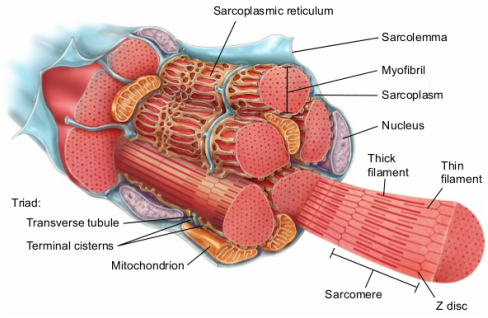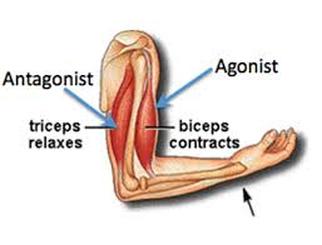I’ve always loved learning, and one thing I’ve always wanted to know more about was neuroscience. Lucky for me, I recently found a Harvard course available online through
edX; if you are interested, you can check them out
here. They offer tons of free classes on all sorts of topics–pretty exciting for all you nerds like me.
So far the course has gone over how a neuron fires; how each neuron interacts with one another; and how memories are formed. I knew that the brain was complex but the true complexity of the noggin is astonishing. For example, a piece of brain matter the size of a grain of sand holds about 300 hundred neurons–that means on average, the human brain contains 100 billion neurons. Such complexity allows us to complete intricate tasks like walking and chewing gum at the same time. But, I am digressing. Let’s get back to the discussion on hand: Physical Literacy.
Intra-Muscular Coordination
|
Inter-Muscular Coordination
We can also move our limbs more powerfully if we can inhibit the opposing muscle to the contracting muscle. For example, when we curl our arms, we contract the muscle fibers in the front of the arm (biceps)–Kate calls her biceps “ceps” for short. If we can inhibit the muscle in the back of the arm (triceps), then there would be less resistance to the action of the biceps; and therefore the biceps would be able to contract more powerfully. This phenomena called Reciprocal inhibition (RI) is a key factor when it comes to inter-muscular coordination.
|
|
 Ok folks, quiz on this next week
Ok folks, quiz on this next week
Muscle fibers contract due to the action potential that arrives from the central nervous system that changes the polarity of the muscle cells leading to the activation of the voltage-gated channel which then stimulate the sarcoplasmic reticulum to release calcium ions into the muscle chamber leading to the binding of actin and myosin which lead to a muscle contraction. You got that, right?
In other words, when a muscle contracts, the muscle fibers shorten due to an electrical impulse from the central nervous system. When we train, the body creates
motor engrams to engage the muscular fibers efficiently and quickly. Initially, our strength increases because the body is able to contract more of the muscle fibers synchronistically. Then, the continual training leads to thicker muscle fibers–this is how
Milo of Croton continued to get stronger in the Ancient Greek myth.
RI is your body’s way of contracting one muscle and relaxing the other to make our limbs work in a smooth fashion. Guess what regulates this process? Why yes, it is our friend the proprioceptors. The consequences of RI not properly working are muscle pulls and muscle tears. These injuries occur when both muscles in the front and the back of a joint engage with a lot force at the same time. For instance, hamstring pulls result when RI is not working correctly.
So, what is the answer to our inter-muscular coordination? Simply, the answer lies in movement and strength training. Thus, moving our limbs in maximum range and adding progressive load over time will train our muscles to get stronger and more coordinated.
Are you still with me? Hope so. For those brave enough, my next post the exciting and exhilarating topic: Work Capacity.
 Ok folks, quiz on this next week
Ok folks, quiz on this next week

0 responses to “PL Part IV: Nitty-gritty of Intra and Inter-muscular coordination”